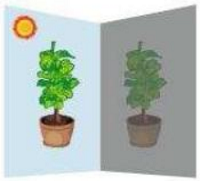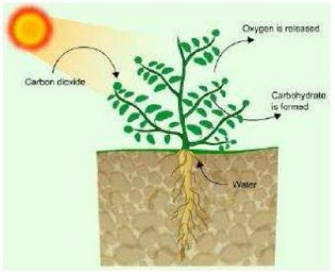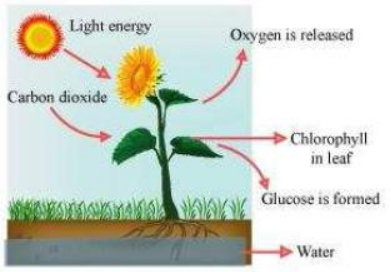
NCERT Solutions for Class 7 Science Chapter 1
NCERT Solutions for class 7 Science Chapter 1: This page consists of details solution of the chapter Nutrition in Plants class 7 Science. You can check NCERT Solutions for Class 7 Science for other chapters of class 8 Science prepared by Physics Wallah .
do the questions by yourself and check your solution with Physics Wallah NCERT solution for the chapter Nutrition in plants. to have more depth in the chapter Nutrition in Plants class 7 science you must read the theory of Nutrition in plants and do the additional question of Physics Wallah click this link to do the questions and read the theory of Nutrition in plants. along with the NCERT solution of class 7 science.
NCERT Solutions for Class 7 Science Chapter 1 Nutrition in Plants Overview
NCERT solutions for Class 7 Chapter 1 are a fantastic way to help students simplify difficult ideas. By offering clarification and helping with idea comprehension, these solutions can be an invaluable tool for students. These Solutions will help students to boost their preparation.NCERT Solutions for Class 7 Science Chapter 1 Nutrition in Plants
While solving science specifically for class 7 you need lots of resources to excel in class 7 science to give you an edge Physics Wallah uploaded additional questions of class 7 science for a solid foundation of class 7 science, Academic team of Physics Wallah uploaded detail theory of class 7 science with added additional Notes & Questions.
| CBSE Syllabus Class 7 | |
| CBSE Class 7 English Syllabus | CBSE Class 7 Math Syllabus |
| CBSE Class 7 Social Science Syllabus | CBSE Class 7 Science Syllabus |
Solutions of Chapter 1 Class 7 Science
Question 1: Why do organisms need to take food?
Answer: All living organisms require food to survive. It gives them the energy to perform various activities. All activities such as playing, running, walking, studying, etc. require energy. The various components present in our food such as carbohydrates, proteins, fats, vitamins, and minerals provide energy to our body. These are also important for the growth and development of the body.

Question 2: Distinguish between a parasite and a saprotroph.
Answer:
| Parasite | Saprotroph |
| The organism that grows on the body of another organism and derives nutrients from it is known as a parasite. | The organism that obtains nutrients from the dead or decaying organic matter is called saprotroph. |
| Examples of parasites are Cuscuta and orchids. | Examples of saprotrophs are fungi and some bacteria. |
| Parasites absorb prepared food from the host. | Saprotrophs digest food outside the body and absorbs digested food. |
| Example of parasites are cuscuta and orchids. | Example of saprotrophs are fungi and some bacteria. |
Question 3: How would you test the presence of starch in leaves?
Answer: Experiment to test the presence of starch in leaves:
Take two healthy green potted plants of the same type. Keep one potted plant in a dark room for one or two days to remove all the starch from the leaves. Keep the other plant in sunlight. Now, take one leaf from each potted plant and put a few drops of iodine solution on them. Then note down the observation. Plants are kept in light and dark conditions.
No blue-black color will be observed on the leaves of the plant kept in the dark room.
This indicates the absence of starch. Blue-black color will be observed on the leaves of the plant kept in sunlight. This indicates the presence of starch.
Plants are kept in light and dark conditions.
No blue-black color will be observed on the leaves of the plant kept in the dark room.
This indicates the absence of starch. Blue-black color will be observed on the leaves of the plant kept in sunlight. This indicates the presence of starch.
Question 4: Give a brief description of the process of synthesis of food in green plants.
Answer: Photosynthesis is defined as the process in which chlorophyll-containing plant cells synthesize food in the form of carbohydrates, using carbon dioxide and water in the presence of solar energy.
 Photosynthesis
Sources of raw materials required for photosynthesis:
(a) Water is taken in from the roots of the plant and is transported to the leaves.
(b) Carbon dioxide from the air enters the leaves through the tiny pores called stomata and diffuses to the cells containing chlorophyll.
(c) Solar energy is used to break water into hydrogen and oxygen. This hydrogen is combined with carbon dioxide to form food for the plants, which is ultimately used by the animals as well.
Thus, photosynthesis can be represented by the following equation.
Photosynthesis
Sources of raw materials required for photosynthesis:
(a) Water is taken in from the roots of the plant and is transported to the leaves.
(b) Carbon dioxide from the air enters the leaves through the tiny pores called stomata and diffuses to the cells containing chlorophyll.
(c) Solar energy is used to break water into hydrogen and oxygen. This hydrogen is combined with carbon dioxide to form food for the plants, which is ultimately used by the animals as well.
Thus, photosynthesis can be represented by the following equation.

Question 5: Show with the help of a sketch that the plants are the ultimate source of food.
Answer:

Question 6: Fill in the blanks:
(a) Green plants are called __________ since they synthesize their own food. (b) The food synthesised by the plants is stored as __________. (c) In photosynthesis solar energy is captured by the pigment called ___________. (d) During photosynthesis plants take in ___________and release ___________.Answer: (a) Green plants are called autotrophs since they synthesise their own food.
(b) The food synthesised by the plants is stored as starch. (c) In photosynthesis solar energy is captured by the pigment called chlorophyll. (d) During photosynthesis plants take in carbon dioxide and release oxygen.Question 7: Name the following:
(i) A parasitic plant with yellow, slender and tubular stem. (ii) A plant that has both autotrophic and heterotrophic mode of nutrition. (iii) The pores through which leaves exchange gases. Answer: (i) Cuscuta (ii) Pitcher plant (iii) StomataCBSE Board Exam Centre List 2024
Question 8: Tick the correct answer:
(a) Amarbel is an example of (i) autotroph (ii) parasite (iii) saprotroph (iv) host (b)The plant which traps and feeds on insects is (i) Cuscuta (ii) china rose (iii) pitcher plant (iv) roseAnswer: (a)Amarbel is an example of
(i) autotroph (ii) parasite (iii) saprotroph (iv) host (b)The plant which traps and feeds on insects is (i) Cuscuta (ii) China rose (iii) pitcher plant (iv) roseQuestion 9: Match the items given in Column I with those in Column II:
| Column I | Column II |
| Chlorophyll | Bacteria |
| Nitrogen | Heterotrophs |
| Amarbel | Pitcher plant |
| Animals | Leaf |
| Insects | Parasite |
Answer:
| Column I | Column II |
| Chlorophyll | Leaf |
| Nitrogen | Bacteria |
| Amarbel | Parasite |
| Animals | Heterotrophs |
| Insects | Pitcher plant |
Question 10: Mark ‘T’ if the statement is true and ‘F’ if it is false:
(i) Carbon dioxide is released during photosynthesis. (T/F) (ii) Plants which synthesise their food themselves are called saprotrophs. (T/F) (iii) The product of photosynthesis is not a protein. (T/F) (iv) Solar energy is converted into chemical energy during photosynthesis. (T/F)Answer: (i) Carbon dioxide is released during photosynthesis. (F)
(ii) Plants which synthesise their food themselves are called saprotrophs. (F) (iii) The product of photosynthesis is not a protein. (T) (iv) Solar energy is converted into chemical energy during photosynthesis. (T)Question 11: Choose the correct option from the following:
Which part of the plant takes in carbon dioxide from the air for photosynthesis? (i) Root hair (ii) Stomata (iii) Leaf veins (iv) SepalsAnswer: (ii) Stomata
Question 12: Choose the correct option from the following:
Plants take carbon dioxide from the atmosphere mainly through their: (i) roots (ii) stem (iii) flowers (iv) leavesAnswer: (iv) leaves
NCERT Solutions for Class 7 Science Chapter 1 FAQs
What topics are covered in Chapter 1 - Nutrition in Plants?
Where can I find reliable NCERT Solutions for Class 7 Science Chapter 1?
How can these solutions help in understanding the chapter?
Are these solutions available for free?
How should I use these solutions effectively for exam preparation?








